Established 2002
Lucinda Shepherd, friend Robert Randell and various experts for their support.
Safety and Precautions
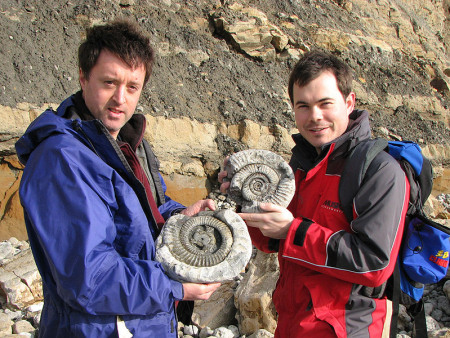
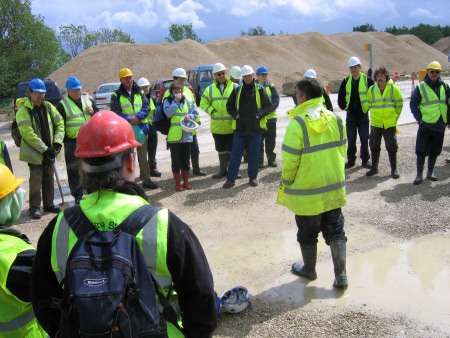
Fossil hunting is an exciting, educational and enriching experience enjoyed throughout the year by people of all ages and levels of experience. To help ensure your day is enjoyed fully it's important to understand the location that you plan to visit.
For the majority of time when undertaken sensibly and with knowledge of the personal risks, fossil hunting is reasonably safe; however it's not possible to eliminate all risk, as is the case with many other recreational activities too.
Productive fossil collecting locations occur in areas with high rates of erosion - mostly due to natural forces and sometimes by the actions of people. In these areas you're likely to encounter unpredictable terrain including but not limited to: falling rocks, slippery surfaces, areas prone to isolation by the incoming tide, steep drops and unstable surfaces. In extreme cases these hazards could result in serious injury.
Cliffs
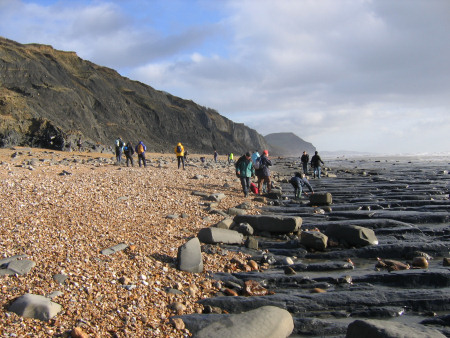
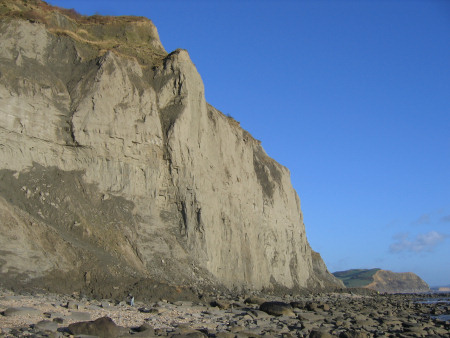
Cliffs are liable to partial or large scale collapse. Always keep
away from the cliff base and be vigilant for falling rocks from
above or loose rocks underfoot.
A cliff is a natural or man-made rock face that extends vertically or steeply from its base to its top. The cliff may continue uninterrupted for many miles or be separated by partial or complete collapses. Most naturally formed cliffs occur on the coast where the bedrock meets the erosive forces of the sea; the cliff may tower hundreds of meters above sea level.
Cliffs are among the most dangerous locations to collect fossils due to the unpredictable stability of the face. The following dangers should be read and understood before you consider visiting an area in proximity to cliffs.
Danger: falling rocks
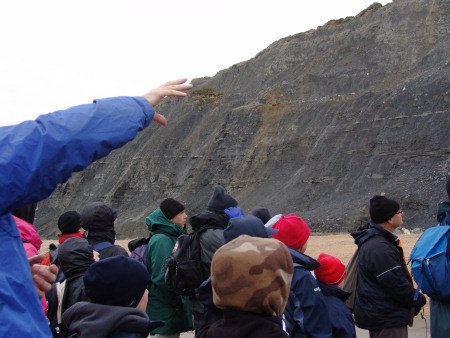
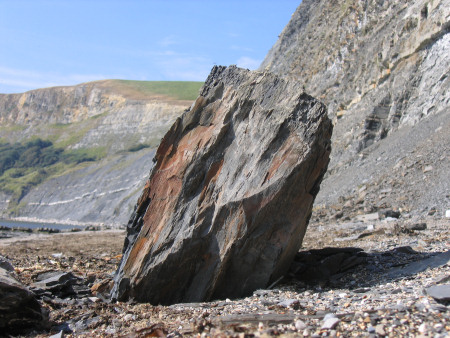
Cliff collapses can occur suddenly and without warning, and may
contain falling rocks weighing several tonnes.
Description: You're likely to encounter vertical or near-vertical rock faces. The rock is liable to partial or large-scale collapse without warning; individual or multiple rocks of varying sizes can fall at great speed to the underlying areas.
Personal risk: Impact to the body and head from falling rocks.
Precautions: Keep well clear of the foot of the rock face, a distance of 8m+ is recommended. You may also like to consider the use of a hard hat.

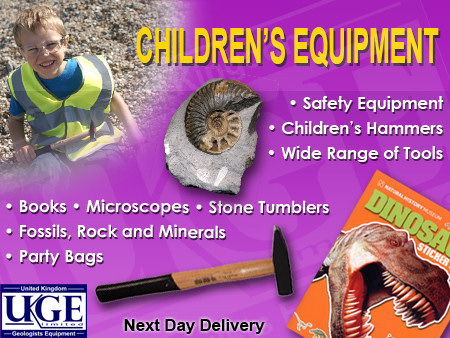
ADVERTISEMENT BY UKGE - OFFICIAL ADVERTISING PARTNER OF DISCOVERING FOSSILS
Danger: steep drops
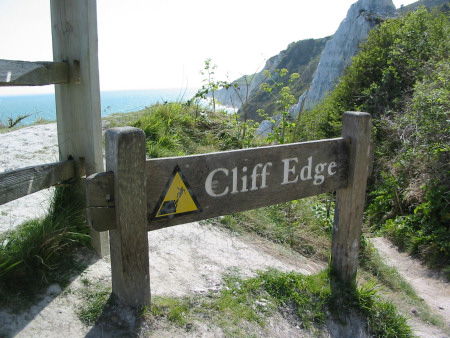
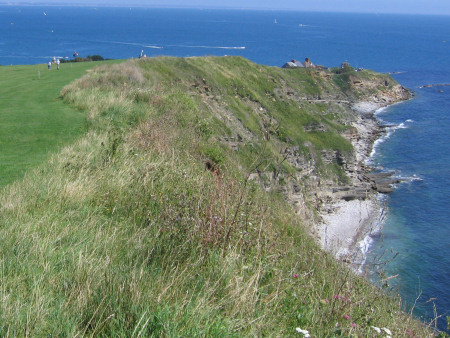
Many coastal areas require passage in close proximity to steep
drops. Keep well clear of the edge and walk calmly and
slowly.
Description: At the cliff-top you're likely to encounter vertical or near vertical rock faces many meters in height. There are usually no warnings that you're approaching a vertical drop.
Personal risk: Falling from height.
Precautions: Keep a safe distance from the cliff edge and always maintain a safe walking pace.
Beaches
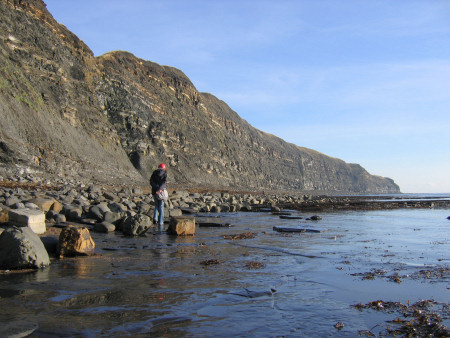
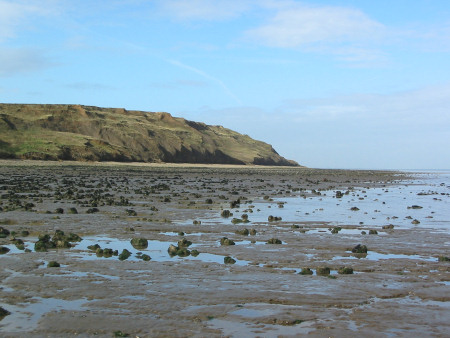
When fossil collecting along coastal areas much of the time will be spent on the beach. In addition to keeping a safe distance from the cliff base (if present) you should also be aware of the following dangers.
Danger: deep mud
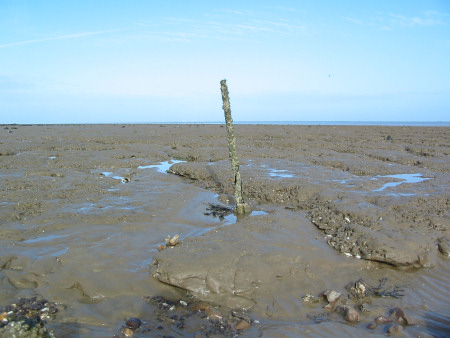
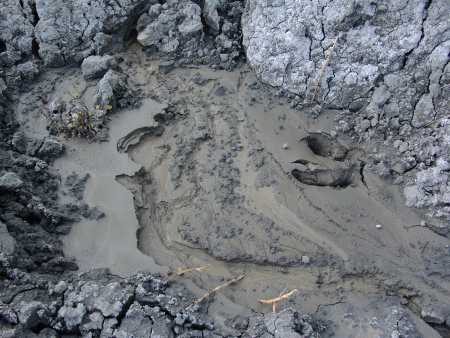
Deep mud can easily make it difficult
or in a worse case scenario impossible to escape without help. Make
sure you keep clear of deep mud.
Description: Regardless of the prevailing weather conditions mud may occur in high volumes and depth. The surface may appear dry and cracked but obscure soft, sticky mud beneath.
Personal risk: Becoming stuck or drowning.
Precautions: Try to avoid muddy areas. Look for evidence of mud depth and if in doubt use a stick to test the stability of the surface ahead of you. It's best not to venture off alone, instead try to remain close to at least one other person and carry a mobile phone in case you get into difficulties.
Danger: rocky terrain
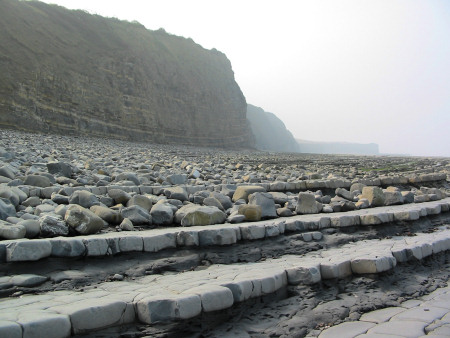
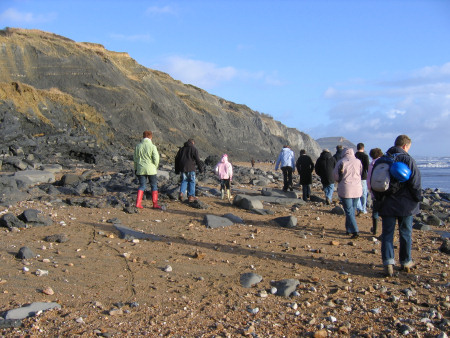
Coastal areas are typically rocky.
Take your time and walk calmly and carefully to avoid twisting your
ankle or falling over.
Description: The terrain around the cliffs may vary from small loose rocks to large boulders weighing many tonnes. These may have slippery surfaces and narrow spaces between them.
Personal risk: Twisted ankles and injuries from slipping or tripping over rocks.
Precautions: Move around the cliff area at a sensible pace (not running) and wear suitable footwear such as walking or safety boots. If wearing wellies avoid loose or slippery rocks as they offer limited grip and ankle support.
Danger: rising tide
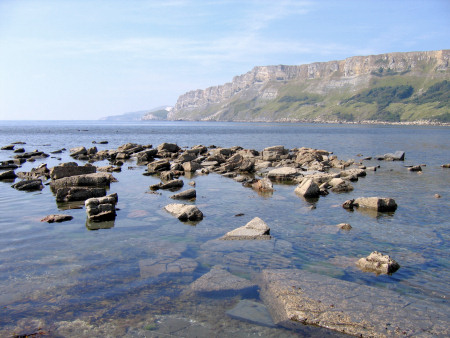
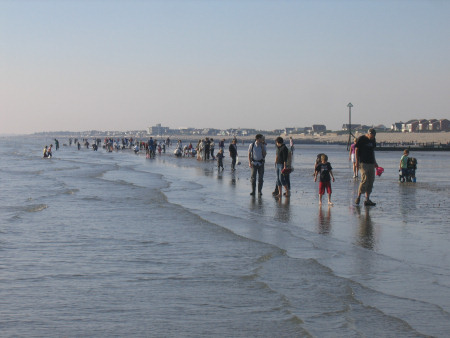
High tide occurs around UK coastal locations
every 12 hours. The tide will recover beaches with a low gradient very
quickly.
Description: Coastlines are subject to rising and falling tides (high-tide occurs every 12 hours). The rising water often isolates sections of the coast and may block your path.
Personal risk: Drowning and/or hypothermia from prolonged exposure.
Precautions: Make a note of the tide times over the next 24 hours. In an emergency you should estimate 6 hours between low and high water (unless indicated otherwise).
Fossil hunting in quarries
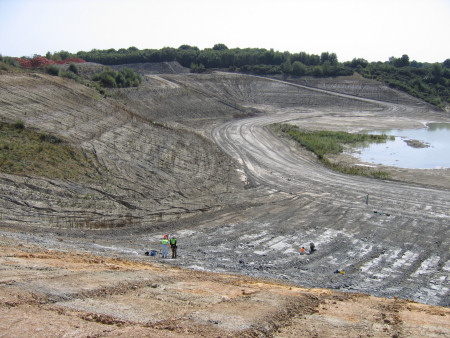
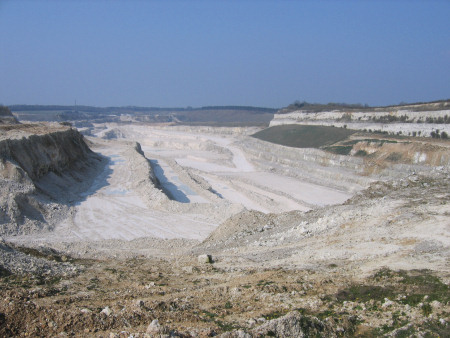
Quarries are large manmade excavations into
the ground, usually to extract minerals or aggregate for construction.
A quarry is a large man made excavation in the ground, usually the result of removing large quantities of rock and sediment for commercial use. If the quarry is described as ‘working’ it means the site is being quarried using digging equipment and possibly explosives on a continuous or unpredictable basis.
Quarries can be dangerous locations to collect fossils due to the nature of the terrain and equipment operating within them. The following list of dangers should be read and understood before you consider entering a quarry. All dangers pose a threat to life in the most extreme circumstances.
Danger: falling rocks
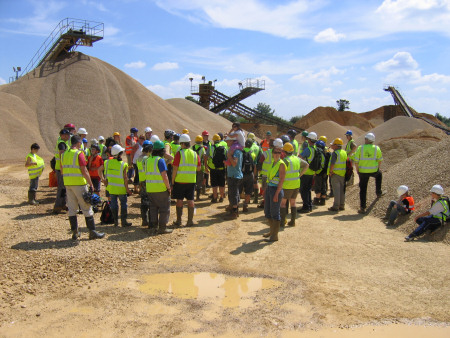
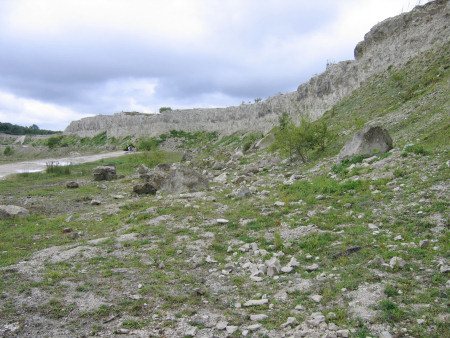
Rocks may fall from the quarry face (similar to cliffs in coastal
areas) and also machinery used to transport materials for sorting.
Description: Within the quarry you're likely to encounter vertical or near vertical rock faces. The rock is highly liable to partial or large-scale collapse without warning. Individual or multiple rocks of varying sizes can fall at great speed to the underlying areas. There may also be a risk of rocks falling from machinery used to transport materials for sorting.
Personal risk: Impact to the body and head from falling rocks.
Precautions: Keep well clear of the foot of the rock face and machinery, and always wear a hardhat and high visibility jacket.


ADVERTISEMENT BY UKGE - OFFICIAL ADVERTISING PARTNER OF DISCOVERING
FOSSILS
Danger: machinery
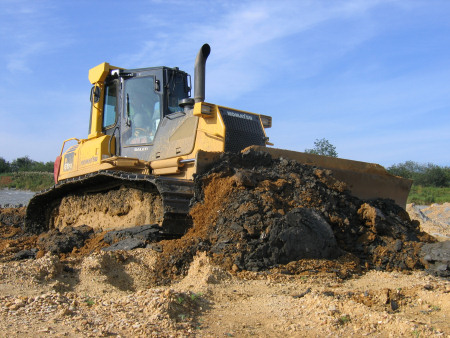
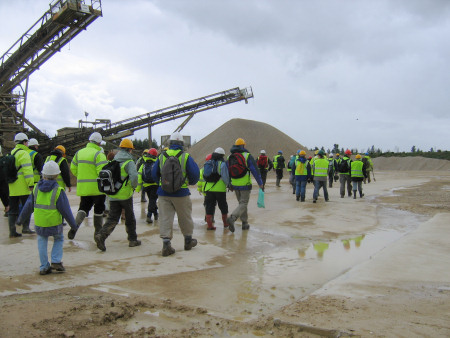
Quarry machinery may be in
operation during your fossil hunt, in either case avoid getting too close.
Description: Heavy digging and transportation equipment is likely to be in use in and around the quarry. These vehicles manoeuvre rapidly and may offload or dislodge large rocks.
Personal risk: Crushed and/or knocked down.
Precautions: Keep well clear of all quarry equipment whether it appears operational or not and wear a hardhat and high visibility jacket.
Danger: deep water
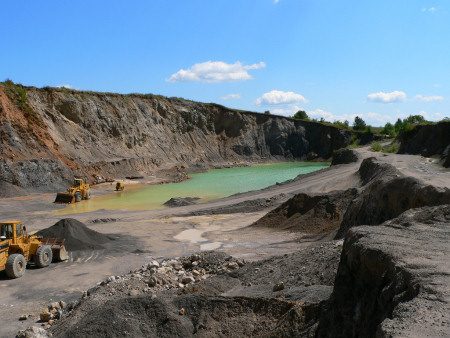
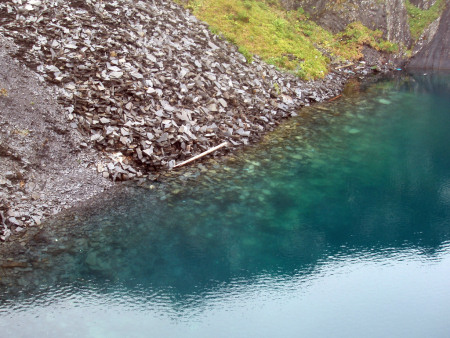
It's common for water to accumulate at the
base of the quarry, these pools may be many meters deep.
Description: Lakes or pools of water frequently accumulate in the base of the quarry. Water depth may descend rapidly to several meters. Rocks and sharp objects may be submerged beneath the surface.
Personal risk: Drowning, hypothermia, injury from contact with submerged objects.
Precautions: Keep clear of the water’s edge and any ridges immediately above the water.
Danger: steep drops
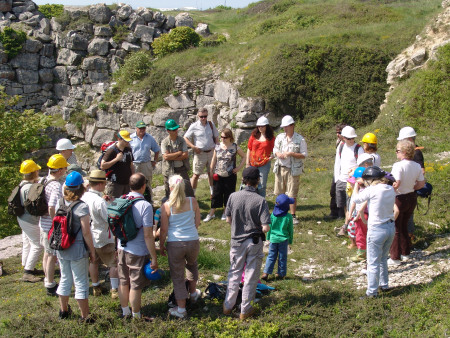
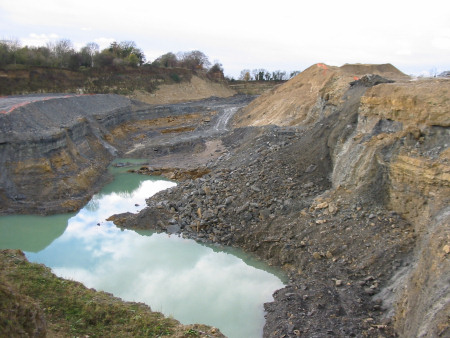
Quarry faces are often shaped into vertical
or near vertical faces. From the higher areas of the quarry these
steep drops can pose a potential hazard.
Description: Within the quarry you're likely to encounter vertical or near vertical rock faces many meters in height. There are unlikely to be any warnings that you are approaching a vertical drop.
Personal risk: Falling from height.
Precautions: Keep a safe distance from the rock face and always maintain a safe walking pace (not running) within the quarry.
Other common dangers while fossil hunting
Danger: using a hammer & chisel
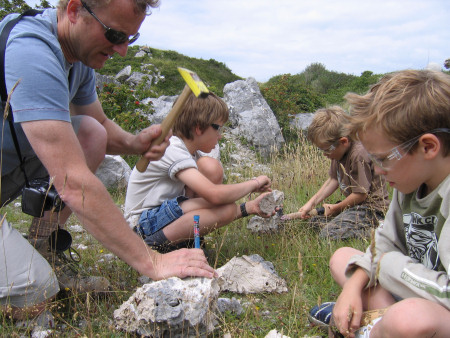
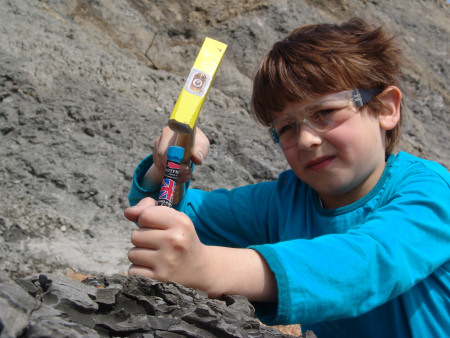
Bruised and cut fingers are perhaps the most common injury sustained when
using a hammer and chisel, take your time and don't strike it too hard.
Description: When hammering rocks it’s possible that the hammer strike may be misjudged, leading to bruised or broken fingers.
Personal risk: Severe damage to fingers and hands (skin and bones).
Precautions: Keep fingers well clear of the hammer and don't rush.
Danger: rock splinters
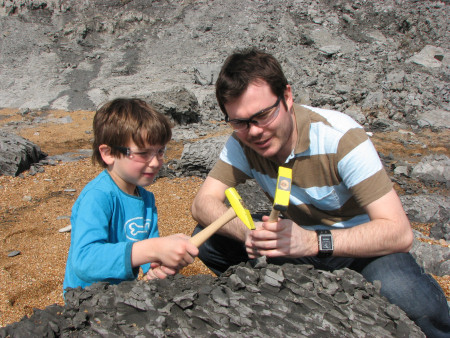
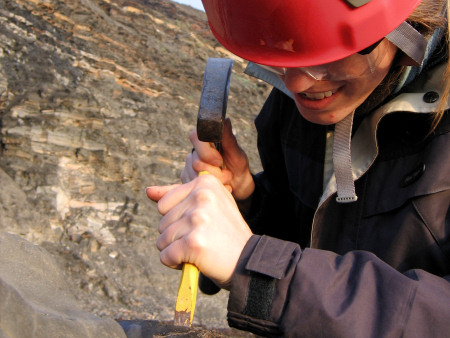
Protective eyewear are recommended while
hammering rocks. Splinters of rock frequently fly for several feet from
impacted rocks.
Description: When hammering rocks it’s likely that sharp fragments will fly from the surface towards your face. This may also occur in close proximity to other people hammering.
Personal risk: Severe eye trauma or blindness.
Precautions: Always wear safety glasses when in proximity to rocks being hammered.
Join us on a fossil hunt
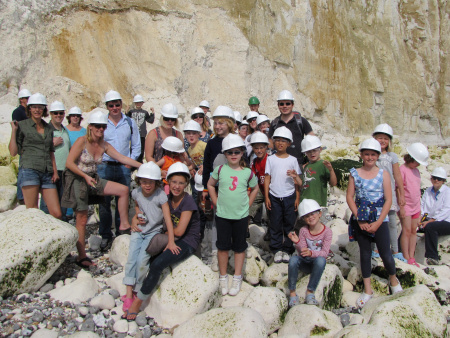
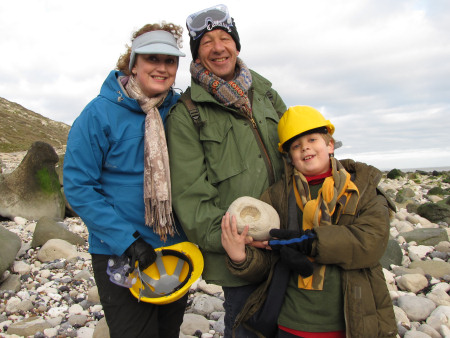
Left: A birthday party with
a twist - fossil hunting at
Peacehaven.
Right: A family hold their prized ammonite at Beachy Head.
Discovering Fossils guided fossil hunts reveal evidence of life that existed millions of years ago. Whether it's your first time fossil hunting or you're looking to expand your subject knowledge, our fossil hunts provide an enjoyable and educational experience for all. To find out more CLICK HERE




